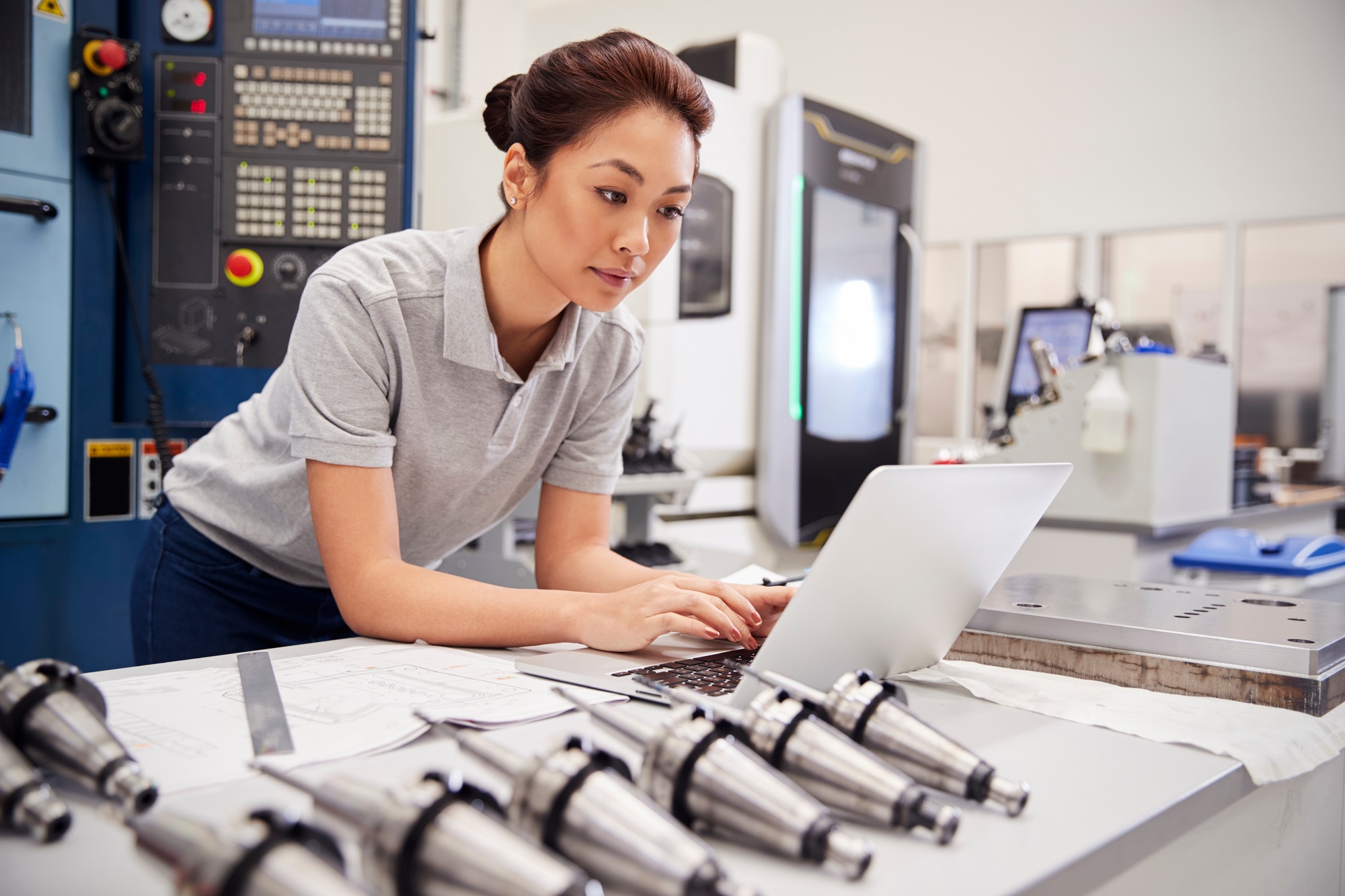Key Takeaways

- Essential Role of Manufacturing Software: Manufacturing software is crucial for boosting operational efficiency, reducing costs, and enhancing productivity within small businesses.
- Key Functionalities: It includes important features like production planning, inventory management, and quality control, all of which streamline operations and minimize errors.
- Benefits of Automation: Automating repetitive tasks not only saves time but also allows for real-time insights, enhancing decision-making capabilities.
- Scalability and Adaptability: The right software solutions enable small businesses to scale effectively and respond promptly to market demands, ensuring competitiveness.
- Challenges to Consider: Implementation challenges such as data integration and user training must be addressed to maximize the benefits of manufacturing software.
- Collaboration Improvement: Enhanced collaboration through centralized communication and remote access contributes to better teamwork and overall performance in manufacturing operations.
In today’s fast-paced industrial landscape, manufacturing software is more than just a tool—it’s a game changer. As businesses strive for efficiency and adaptability, leveraging the right software can streamline operations, reduce costs, and enhance productivity. Whether you’re managing inventory, optimizing production schedules, or ensuring quality control, the right software solution can make all the difference.
Imagine having the power to automate repetitive tasks and gain real-time insights into your production processes. With advancements in technology, manufacturing software is evolving to meet the unique needs of various industries. From small businesses to large enterprises, understanding the benefits of these solutions is crucial for staying competitive in a rapidly changing market.
Overview of Manufacturing Software

Manufacturing software serves as a vital tool for small businesses aiming to enhance operational efficiency. This software encompasses various applications designed to streamline processes like inventory management, production scheduling, and quality control.
Manufacturing software helps you automate repetitive tasks, reducing human error and saving valuable time. With real-time insights, you can monitor production metrics and make informed decisions quickly. These tools can also integrate various aspects of your business, creating a cohesive workflow that enhances communication and data sharing.
You can choose from several types of manufacturing software such as Enterprise Resource Planning (ERP), Manufacturing Execution Systems (MES), and Product Lifecycle Management (PLM). Each offers distinct benefits tailored to small business needs, enabling you to optimize resources effectively and respond faster to market demands.
Investing in the right manufacturing software positions your small business for growth, allowing you to compete with larger entities. With the ability to scale operations as your business expands, this software adapts to the dynamic landscape of manufacturing, keeping you ahead in a rapidly evolving market.
Key Features of Manufacturing Software

Manufacturing software offers essential tools that help streamline and enhance your small business operations. By focusing on production planning, inventory management, and quality control, this software elevates efficiency and reduces costs.
Production Planning
Production planning modules allow you to create efficient production schedules. These modules assess customer demands in real-time, ensuring:
- Demand-driven, on-time delivery
- Accurate and timely production planning
- Optimized use of resources, including material, labor, and equipment
- Reduced cycle times and minimized inventory costs
Utilizing a Master Production Schedule (MPS) helps you define all necessary resources, constraints, and costs to meet manufacturing demand.
Inventory Management
Effective inventory management tools help you track stock levels, manage orders, and reduce excess inventory. Key benefits include:
- Real-time visibility of inventory across all locations
- Automated reorder notifications to prevent stockouts
- Accurate forecasting to optimize inventory levels
Implementing these features ensures that you maintain adequate stock without over-investing in inventory, essential for running a small business effectively.
Quality Control
Quality control features within manufacturing software provide tools to maintain and enhance product quality. These features enable:
- Consistent tracking of quality metrics throughout production
- Automated quality inspections to identify defects early
- Compliance with industry standards
Incorporating robust quality control processes enhances customer satisfaction and reduces rework, crucial for growing your small business in a competitive market.
Benefits of Using Manufacturing Software

Manufacturing software provides small businesses with essential tools that enhance efficiency, reduce costs, and facilitate collaboration. Understanding its benefits can significantly impact your operations and competitive edge.
Increased Efficiency
Manufacturing software enhances your operational efficiency through several key features.
- Streamlining Production Processes: This software integrates production stages like inventory management, production scheduling, and quality control. Integration utilizes resources optimally, reduces bottlenecks, and ensures smoother operations.
- Automating Routine Tasks: Automation takes care of data entry, report generation, and machine setup, freeing up employee time for strategic activities. This reduces human error and boosts overall productivity.
- Real-Time Monitoring and Adjustments: Real-time tracking enables you to monitor progress and identify issues promptly. Immediate adjustments lead to faster output and fewer delays.
Cost Reduction
Manufacturing software minimizes costs through efficiency and waste reduction.
- Optimizing Resource Utilization: The software maximizes resources by providing insights into resource allocation, ensuring that every asset is fully utilized. This prevents unnecessary expenses and lowers operational costs.
- Reducing Waste: By improving inventory management and production processes, the software helps reduce excess stock and waste. This resource optimization is crucial for small businesses aiming to maintain low overheads.
- Lowering Labor Costs: Automation simplifies labor-intensive tasks, reducing the need for additional staffing. Lean operations save you money while allowing for quicker response times to market demands.
Enhanced Collaboration
Manufacturing software boosts collaboration among team members and departments.
- Centralized Communication: The software creates a centralized platform for sharing information. Improved communication enhances teamwork and aligns everyone toward common goals, essential for the success of small businesses.
- Facilitating Remote Work: Many manufacturing software solutions support remote access, allowing your team to work efficiently from different locations. This flexibility can improve productivity and job satisfaction.
- Integrating Supply Chain Communication: Transparent communication with suppliers and distributors through the software leads to better coordination. This integration can enhance overall supply chain performance, which is vital for running a small business.
Challenges in Implementing Manufacturing Software

Implementing manufacturing software presents several challenges that can affect your small business’s success. Addressing these challenges effectively ensures smoother adoption and integration into your operations.
Data Integration
Data integration represents a significant challenge in manufacturing software implementation. Your small business relies on data from various sources, such as machines and manufacturing systems like MES and ERP. Integrating this data into a single, unified system can be complex. You may deal with different data formats, which necessitates compatibility with your existing systems. As you manage various software solutions, ensuring that they communicate seamlessly to provide accurate insights can become a daunting task.
User Training
User training is another critical component in implementing manufacturing software. Without proper training, your team may face difficulties in navigating new systems effectively. It’s essential to invest in comprehensive training programs tailored to your staff’s skill levels. When employees understand how to utilize the software’s features effectively, you’ll see increased efficiency and reduced operational disruptions. Ensuring ongoing support during the training phase can boost team confidence and overall adoption rates, ultimately leading to better outcomes for your small business.
Conclusion

Embracing manufacturing software is essential for your business to thrive in today’s competitive landscape. By streamlining operations and automating tasks, you’ll not only enhance efficiency but also reduce costs and improve overall productivity.
Investing in the right solutions tailored to your specific needs can empower you to adapt quickly to market changes and customer demands. With the right tools at your disposal, you can focus on growth while maintaining high standards of quality and collaboration.
Don’t underestimate the transformative power of technology in manufacturing. Equip yourself with the right software and watch your business flourish.
Frequently Asked Questions

What is manufacturing software?
Manufacturing software is a digital solution designed to enhance operations in the manufacturing industry. It streamlines processes such as inventory management, production scheduling, and quality control, leading to improved efficiency and reduced costs.
How can manufacturing software improve efficiency?
Manufacturing software automates repetitive tasks, integrates various production stages, and provides real-time insights. This automation enables businesses to work faster, reduce human errors, and respond quickly to market demands, ultimately boosting overall efficiency.
What types of manufacturing software are available?
Key types of manufacturing software include Enterprise Resource Planning (ERP), Manufacturing Execution Systems (MES), and Product Lifecycle Management (PLM). Each is tailored to optimize resources and meet specific business needs within the manufacturing sector.
How does manufacturing software help small businesses?
Manufacturing software enhances operational efficiency for small businesses by automating tasks, providing real-time data insights, and improving resource management. This enables them to compete with larger companies and adapt to changing market conditions.
What are the key features of manufacturing software?
Key features include production planning, inventory management, and quality control. These tools help create efficient schedules, maintain adequate stock levels, and ensure product quality, ultimately improving customer satisfaction and reducing rework.
What are the benefits of using manufacturing software?
Benefits include increased efficiency, cost reduction, and enhanced collaboration. Manufacturing software optimizes resource usage, minimizes waste, and provides a centralized platform for communication, which is vital for small businesses aiming for success.
What challenges do small businesses face when implementing manufacturing software?
Small businesses typically encounter data integration issues and user training challenges. Ensuring compatibility with existing systems and providing comprehensive training are critical for successful implementation and effective utilization of the software.
How can businesses overcome implementation challenges?
To overcome implementation challenges, businesses should focus on data integration strategies and develop comprehensive training programs for employees. Ongoing support and resources will help boost user confidence and improve software adoption rates.
Image Via Envato: SpaceOak, piasupuntongpool, josecarloscerdeno, patruflo, FoToArtist_1, visootu2, monkeybusiness



